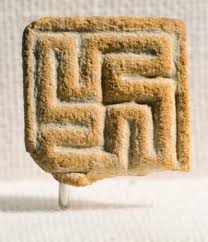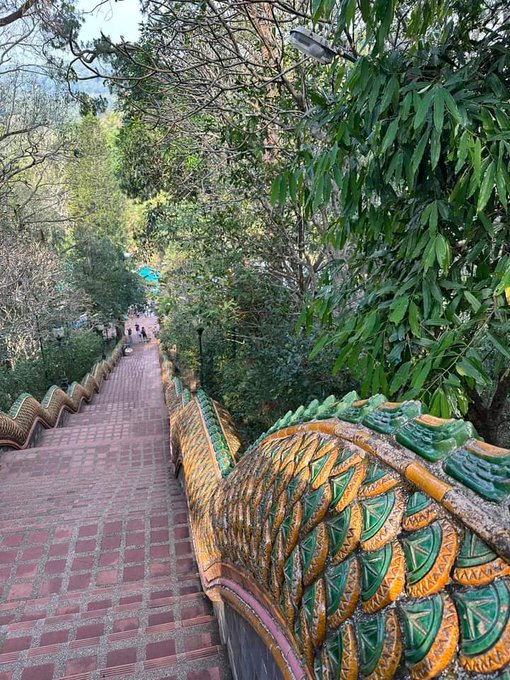We come across the word itihasa in probably the oldest manuscript of southern Buddhism. In the Sutta Nipata, Sela Sutta, PTS 7, p.105, ed. 1997 we read: “Tena kho pana …. itihásapañcamámam …” : At that time a brahmin called Sela lived in Ápana. He was well versed in the three Vedas, vocabulay, prosody, rhetoric, etymology, history (itihasa), versed in metre, a grammarian, … etc.
Early May 2020 Sangham, resp. Srijan Talks uploaded a long exposé held by Mr. Bibek Debroy(1) on the subject of itihasa and its meaning. The subtext of this Youtube-file reads: “Itihasa has connotations of a timeless history, chronologically written description of important, special and public sector events of the person, society, country, chronological analysis of facts and events. Itihasa means ‘This is indeed what happened’. Itihasa came to be applied to the Ramāyan[a], the Mahābhārata and the Puránas which are part of our culture and history.”
In this same video Mr. Debroy explains a number of technical terms and he speaks about the Pune “critical edition” of the Rāmayāna in 80.000 slokas, and the Baroda “critical edition” of the Mahābhārata, “in size about 1/3 of the Rāmayāna”.
As far as ancient texts about legislation, jurisdiction and policy goes he explains how the Manu Sánghita “tells us about the most important 17 kinds of cases which the king should try in order of priority”. He explains how the funeral rites are given in the Garuda purána (translated by Ernest Wood and S.V. Subrahmanyam, an online file), and that “the way (hindu) temples are constructed”(2) is given in the Matsu purána.
There is lots more of interesting information about the Sanskrit language, information that deserves a wider audience. For instance the word Padaga: tree (not in Monier-Williams) has the root “pi” (speak: “bhe”) for “drinking”. Therefore, he says, padaga has both “foot” (pada) and “pi”. Therefore the literal meaning of the word tree is “drinking with its feet”. Is this important? Yes, it reminds us of our duty to avert or overcome desertification.
Mr. Debroy furthermore explains how a certain Jayadeva has been the first poet, as to Western standards, rhyme-and-all, but that the Sanskrit poem is syllabical and has rhythm (beat) as its most important aspect.
Lastly we should know that Mr. Debroy has by now translated one(3) of the main eighteen puránas, and plans to translate a further two. These are, or will be, the first translations by his hand into English. The above-mentioned Garuda purána is one of the other already translated texts.
(1) Bibek Debroy is an economist and was educated in Ramakrishna Mission School, Narendrapur; Presidency College, Kolkata; Delhi School of Economics and Trinity College, Cambridge. Presently, he is Chairman, Economic Advisory Council to the Prime Minister and Member, NITI Aayog, Government of India. He has worked in Presidency College, Kolkata (1979-83), Gokhale Institute of Politics and Economics, Pune (1983-87); Indian Institute of Foreign Trade, Delhi (1987-93); as the Director of a Ministry of Finance/UNDP project on legal reforms (1993-98); Department of Economic Affairs (1994-95); National Council of Applied Economic Research (1995-96); Rajiv Gandhi Institute for Contemporary Studies (1997-2005); PHD Chamber of Commerce and Industry (2005-06); and Centre for Policy Research (2007- 2015).
He has authored/edited several books, papers and popular articles and has also been a Consulting/Contributing Editor with several newspapers.
(2) Just as the staff of the East India Company called the island of Phuket “Junk Ceylon” (a junk is a particular kind of vessel, and the greenery of the island remined them of Ceylon [Sri Lanka]), so they had a joking “shaking the pagoda tree” in which sentence the “pagoda” in fact was/is the southern Indian Hindu temple.
(3) In three volumes. The puránas cover a wide range of teaching, astronomical, astrological, geographic, chronological, religious mythology and ethical discussion. One of Mr. Debroys critics deplores how the author omitted “all of the lunar dynastic lists”. Perhaps the next two translations will remedy this.





